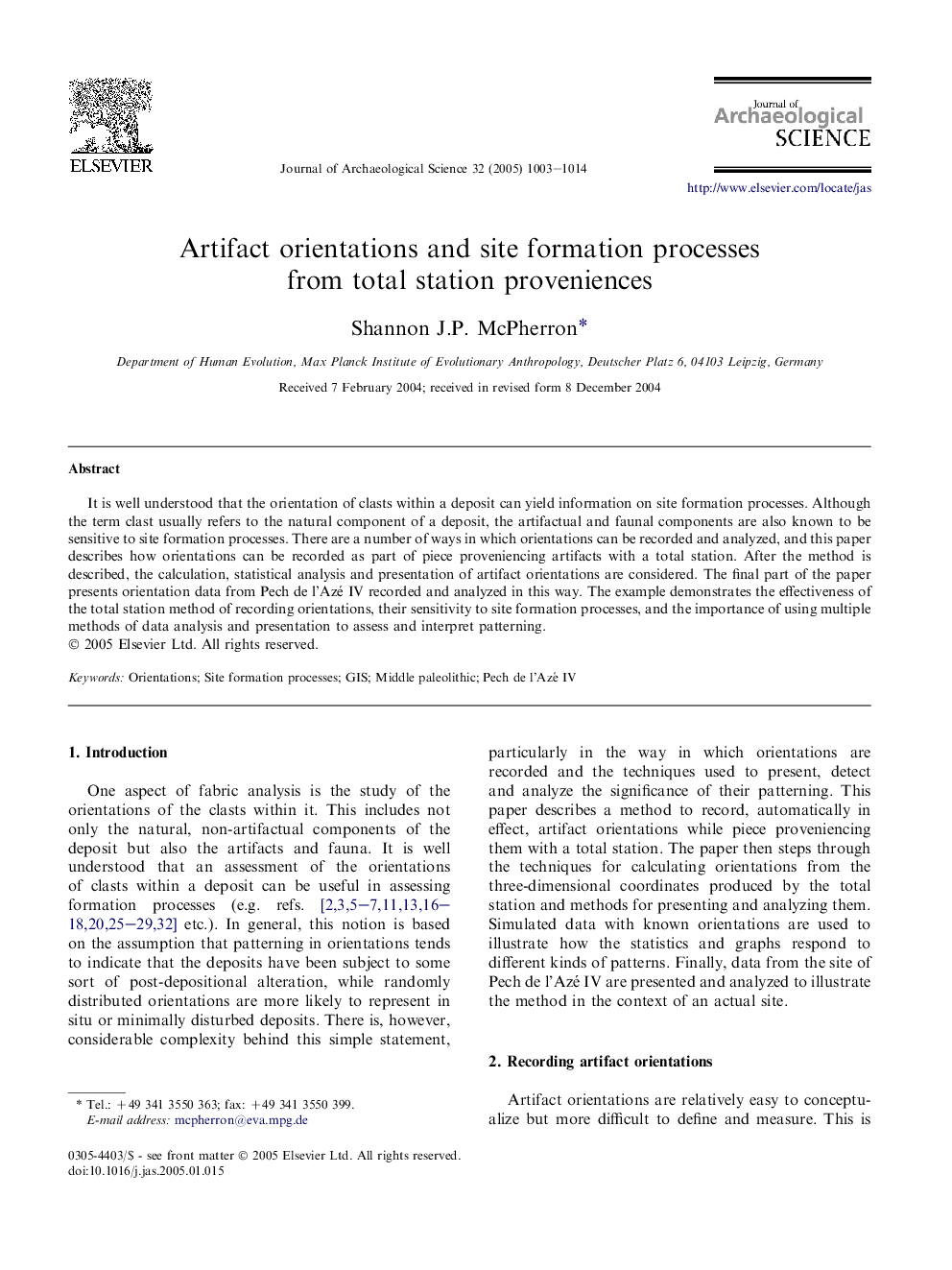| Article ID | Journal | Published Year | Pages | File Type |
|---|---|---|---|---|
| 10499439 | Journal of Archaeological Science | 2005 | 12 Pages |
Abstract
It is well understood that the orientation of clasts within a deposit can yield information on site formation processes. Although the term clast usually refers to the natural component of a deposit, the artifactual and faunal components are also known to be sensitive to site formation processes. There are a number of ways in which orientations can be recorded and analyzed, and this paper describes how orientations can be recorded as part of piece proveniencing artifacts with a total station. After the method is described, the calculation, statistical analysis and presentation of artifact orientations are considered. The final part of the paper presents orientation data from Pech de l'Azé IV recorded and analyzed in this way. The example demonstrates the effectiveness of the total station method of recording orientations, their sensitivity to site formation processes, and the importance of using multiple methods of data analysis and presentation to assess and interpret patterning.
Related Topics
Physical Sciences and Engineering
Materials Science
Materials Science (General)
Authors
Shannon J.P. McPherron,
